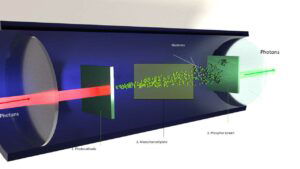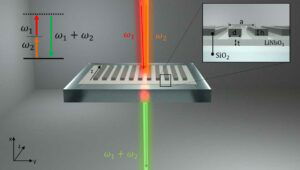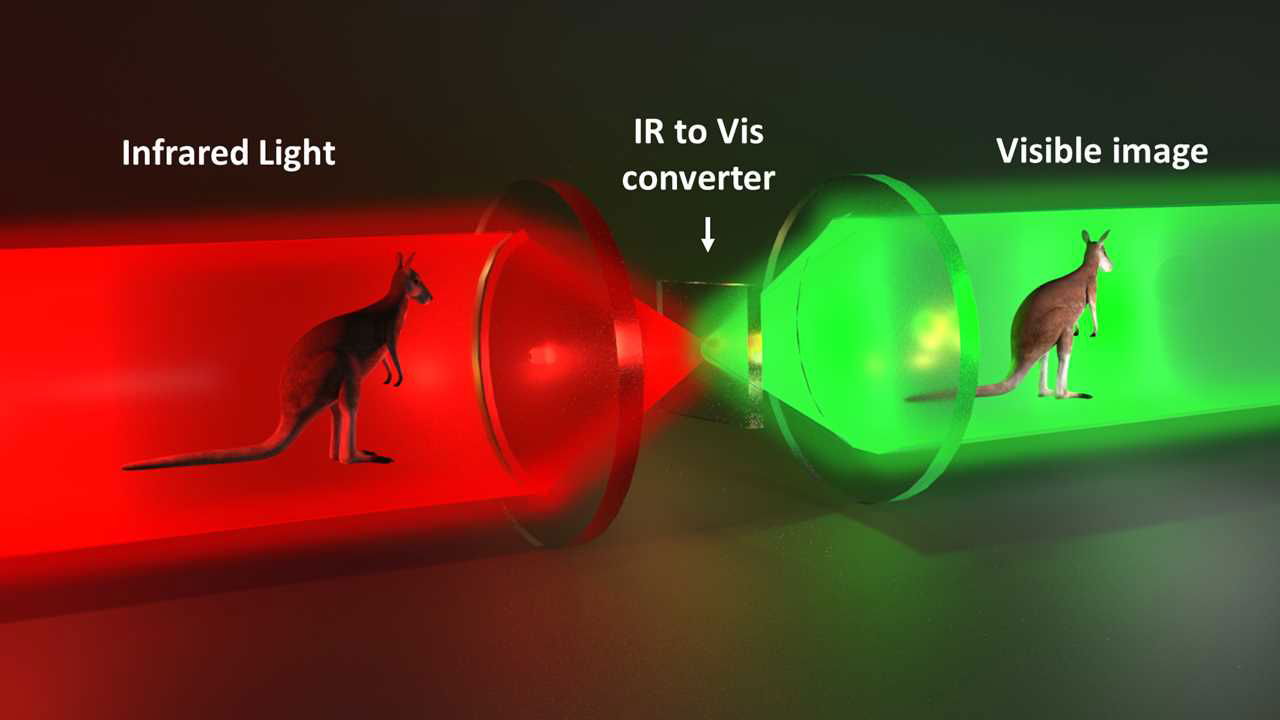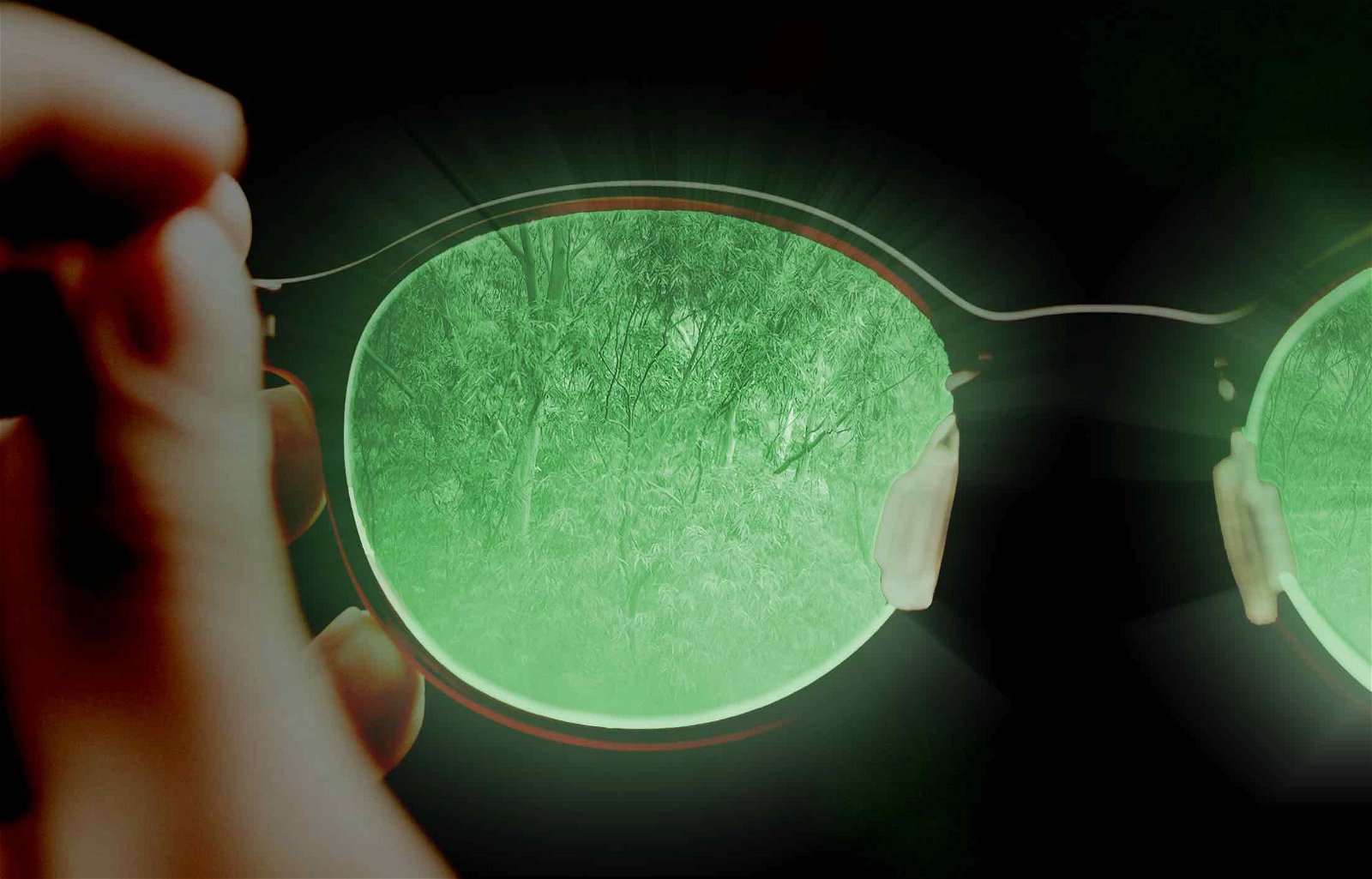A team of scientists has created an ultra-thin coating that can provide high-efficiency night vision to any glass surface, including ordinary reading glasses. Designed using something called a non-local metasurface, the plastic-wrap-thin coating also lets through all of the visible light, allowing users to see perfectly during daytime or at night.
Some previous efforts using a non-local metasurface to create a night vision coating have shown limited success. However, those efforts have suffered from severely limited image quality. The inventors of this newest coating say they have broken through that barrier, resulting in a high-definition image visible light image that could rival the infrared to visible light up-conversion rates of bulkier, more complex night vision systems already in commercial use today.
“People have said that high-efficiency up-conversion of infrared to visible is impossible because of the amount of information not collected due to the angular loss that is inherent in non-local metasurfaces,” explained Laura Valencia Molina, a researcher from the Australian National University’s ARC Centre of Excellence for Transformative Meta-Optical Systems (TMOS). “We overcome these limitations and experimentally demonstrate high-efficiency image up-conversion.”
New Night Vision Tech Takes Advantage of 21-st Century Metamaterials
In traditional night vision systems, photons in the infrared spectrum that are invisible to the naked eye pass through the front lens of the device. Once inside, the photons are first converted to electrons by a photocathode and then sent to a microchannel plate that increases their number. Finally, these electrons pass through a phosphor screen, which converts them back to photons only in the visible spectrum.


Unfortunately, manufacturing goggles that can send invisible infrared light through all of these complex steps to create a visible light image requires equally complex equipment. This has resulted in night vision goggles that are bulky and expensive, dramatically reducing their practical applications. Such systems also typically need to block the visible light, resulting in goggles that only work in certain conditions.
In an effort to change the equation, the TMOS team focused on creating a coating thinner than plastic wrap that not only lets through all of the visible light but also has the ability to up-convert a wide spectrum of infrared light to visible light without all of the extra equipment and material. As noted, the team’s previous work has tried a new class of material called a non-local metasurface. However, those efforts, which used a non-local metasurface made of gallium arsenide, suffered numerous limitations.
Non-local Metasurfaces Convert Infrared Light to Visible Light
In their new research, which is published in the journal Advanced Materials, Molina, who is the lead author, and colleagues decided to experiment with a new non-local metasurface made from lithium niobate. Unlike the gallium arsenide metasurface, lithium niobate lets through all of the visible light, expanding its versatility and potential uses. The researchers also hoped that the new metasurface would overcome previous limitations in the up-conversion process, resulting in a true night vision coating that can be applied to almost any transparent surface.


“Photons pass through a single resonant metasurface where they are mixed with a pump beam,” the press release announcing the new night vision coating explains. “The resonant metasurface enhances the energy of the photons, drawing them into the visible light spectrum—no conversion of electrons needed.”
Following some trial and error, Molina and colleagues found the right mix. The result is a non-local metasurface coating that can provide true night vision without all of the extra equipment and material, something the researchers are calling an industry first.
“This is the first demonstration of high-resolution up-conversion imaging from 1550 nm infrared to visible 550 nm light in a non-local metasurface,” said study author Rocio Camacho Morales. “We choose these wavelengths because 1550 nm, an infrared light, is commonly used for telecommunications, and 550 nm is visible light to which human eyes are highly sensitive.”
Wide Range of Potential Applications For Metasurface Coating
Moving forward, the researchers behind the night vision coating say they are looking at ways to improve the range of IR light their material can up-convert, as well as improve edge detection for images captured using this technology.
“Future research will include expanding the range of wavelengths the device is sensitive to, aiming to obtain broadband IR imaging, as well as exploring image processing, including edge detection,” Morales explained.


Although the new coating is not yet available for purchase, the team says there are a number of potential uses. These include military, policing, and hunting applications, as well as a whole range of markets, such as jobs that work in low-light conditions, glasses for nighttime activities, or even car windows that can improve driving visibility in low-light situations.
“These results promise significant opportunities for the surveillance, autonomous navigation, and biological imaging industries, amongst others,” said study Chief Investigator Dragomir Neshev. “Decreasing the size, weight, and power requirements of night vision technology is an example of how meta-optics, and the work TMOS is doing, is crucial to Industry 4.0 and the future extreme miniaturization of technology.”
Christopher Plain is a Science Fiction and Fantasy novelist and Head Science Writer at The Debrief. Follow and connect with him on X, learn about his books at plainfiction.com, or email him directly at christopher@thedebrief.org.

